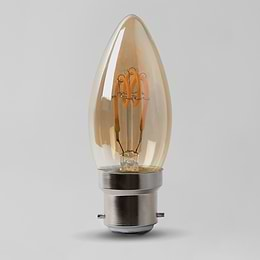How Does Colour Temperature Affect Humans?
How Does Colour Temperature Affect Humans?

Colours that we come into contact with every day have a subconscious effect on us without us realising it. The same goes for colour temperature in our lighting. It might be affecting us in a way that hinders our performance and even our mood.
Colour temperature is measured in degrees kelvin on a scale of 1000 to 10,000. Bulbs which have a lower colour temperature will have a warm light. Whilst those with a higher colour temperature emit a bright, blue/white cool light.
How Does Colour Temperature Affect Us?
Have you noticed before that natural light gives you a spring in your step? When lighting is dimmed, do you feel sleepy? Do dimly lit rooms give you an instant headache? You're not going mad, there is a scientific link between the colour temperature of lighting and our mood.
Light therapy studies have discovered that different colour temperatures affect moods, heart rates and circadian rhythms. Scientifically speaking, this is because different intensities of light cause the body to release different hormones.
Blue Light & Circadian Rhythm
Humans follow a circadian rhythm, this is a natural, internal process within the body which regulates the sleep/wake cycle. Artificial light at night that is omitted from our phones can disrupt our cycle by suppressing melatonin production in the evening.
Melatonin keeps us healthy by inducing sleep, boosting the immune system, lowering cholesterol, and helping organs function. It has been proven that people who suffer from suppressed melatonin levels and lack of sleep are more prone to depression and low mood.
Advice suggests putting your phone away an hour before bed to limit your exposure. Alternatively, you can dull the brightness to night settings on your phone.
However, you can further minimise your exposure to blue light at night by changing the kind of lights you have in certain areas of your home. Consider using Warm White (2500K-2700K) LED lights in your bedroom or living room with a dimmer.

On the other side of the spectrum, warmer light sources (between 2000K-2700K) create warmth and relaxation. This colour temperature is equivalent to things like dusk, candlelight, and firelight. It creates a warm, cosy environment, and can also encourage creativity and conversation. Choose warm white bulbs for bedrooms, bathrooms, dining and living rooms.
Productivity
You become a product of your environment, and it's no different when it comes down to lighting. Boosting productivity and concentration is desirable when thinking about lighting in offices and workspaces.
Cool white light (between 3,500-4,100K) is not quite as bright as natural daylight, but, does provide some benefits. This colour temperature triggers our brains to stay alert, promotes concentration and has been linked to boosting productivity in people. This colour temperature also makes it easier for our eyes to see and perform tasks.
Cool white LED bulbs are common within offices and workspaces. They can also be used as task lighting in kitchens and other areas that require it.
Mental Health & Wellbeing
It's no surprise that natural daylight generally makes us have a spring in our steps. Studies have shown that exposure to natural daylight and artificial daylight (5,600-6,000K), especially in the morning, can significantly improve health conditions such as depression, stress, sleep and SAD (seasonal aid disorder).
Like natural daylight, this colour temperature is bright, fresh and calming. It can make people feel more alert and has been tied with links between increased productivity and work performance.
Natural daylight bulbs are ideal for task lighting uses, offices and in areas that require this level of lighting.

The way colour temperature affects humans has been well documented in several scientific studies. So, when you're next choosing the lighting for your home, colour temperature is one area that you should definitely pay close attention to.
Take a look at our full range of LED bulbs and browse by colour temperature to find the right lighting for your home.
[related_products is_auto_added="1"]





